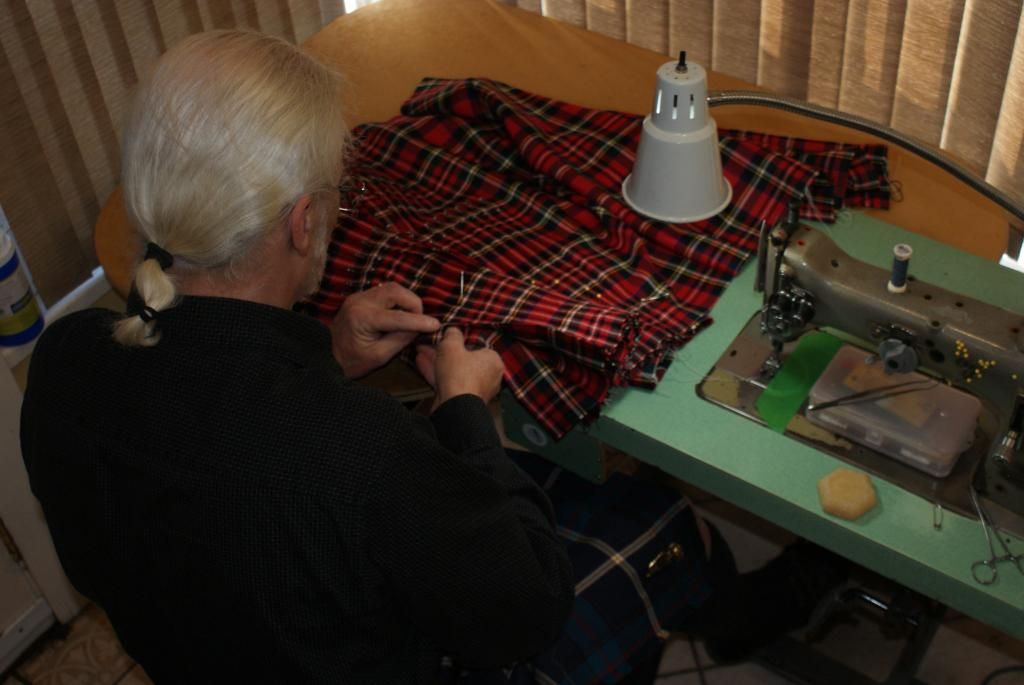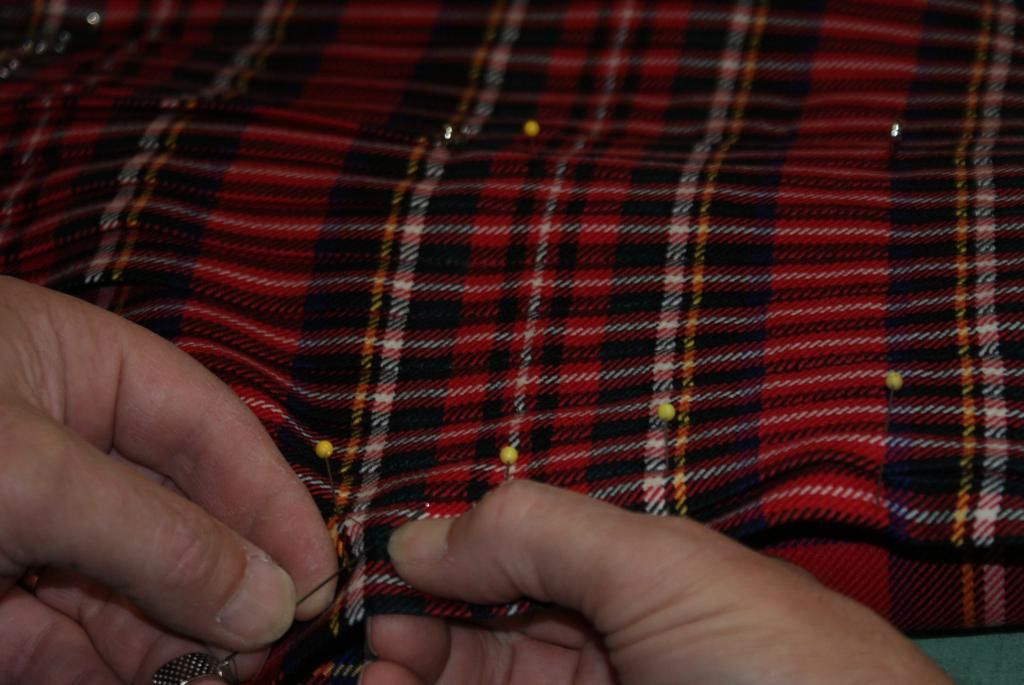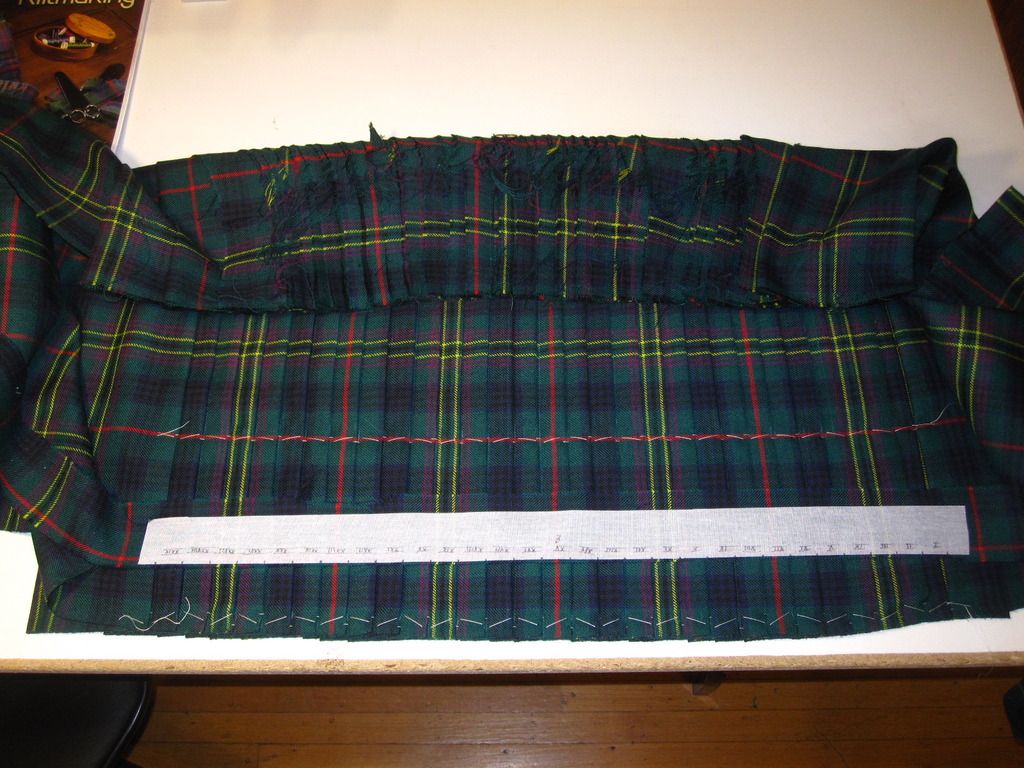One of the skills a kiltmaker must learn is accurate measuring. For example - Lets say that you plan to have 36 pleats in your kilt. If each pleat is off in measuring by only 1/32 of an inch (or one twill line) your total will be off 1 full inch.
So, many of us always have a tape measure or ruler close at hand while pleating. Barb and I have a tape measure around our necks constantly. We check and double check the width of each and every pleat at the hips and again at the waist. We check the pleat width as we pin, as we sew, and again after the stitching is done to insure that our width has not varied. We both will rip out a pleat and re-do it if our finished width in not within our own personal tolerance. (My personal tolerance is 1/32 of an inch or one twill line.)
Now, in relation to your measurements. Splits are most often listed as four numbers i.e. 20/19 21/22 The first two numbers refer to a total waist circumference of 38, split with the apron 20 wide and the pleated part 19. The second number is the hip circumference with a total of 43. 21 in the apron and 22 the pleated part.
So, if the rear hip split is 22 and your kilt has 22 pleats - then each pleat would be 1 wide at the hips.
Those same 22 pleats would then taper to 19 wide in total or 19/22=.86. Each pleat is 1 at the hips and tapers down to .86 at the waist.
The rise above the waist would continue .86 wide to the top of the kilt.
Each kiltmaker develops their own way of insuring accurate measurements. Some like to pin or baste their pleats. Some draw lines.
Correct size of the finished garment should be the goal.
Does this help?
Steve Ashton
www.freedomkilts.com
Skype (webcam enabled) thewizardofbc
I wear the kilt because: Swish + Swagger = Swoon.





















Bookmarks